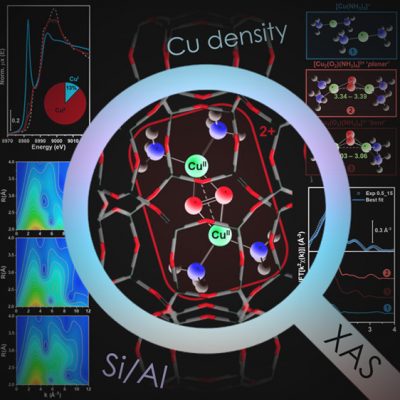J. Phys. Chem. Lett. – Andrea Martini, Chiara Negri, Luca Bugarin, Gabriele Deplano, Reza K. Abasabadi, Kirill A. Lomachenko, Ton V. W. Janssens, Silvia Bordiga, Gloria Berlier, and Elisa Borfechia.

Cu-exchanged chabazite is the catalyst of choice for NOx batement in diesel vehicles aftertreatment systems via ammonia-assisted selective catalytic reduction (NH3−SCR). Herein, we exploit in situ X-ray absorption spectroscopy powered by wavelet transform analysis and machine learning-assisted fitting to assess the impact of the zeolite composition on NH3-mobilized Cu-complexes formed during the reduction and oxidation half-cycles in NH3−SCR at 200 °C. Comparatively analyzing well-characterized Cu-CHA catalysts, we show that the Si/Al ratio of the zeolite host affects the structure of mobile dicopper(II) complexes formed during the oxidation of the [CuI(NH3)2]+ complexes by O2. Al-rich zeolites promote a planar coordination motif with longer Cu−Cu interatomic distances, while at higher Si/Al values, a bent motif with shorter internuclear separations is also observed. This is paralleled by a more efficient oxidation at a given volumetric Cu density at lower Si/Al, beneficial for the NOx conversion under NH3−SCR conditions at 200 °C.
Click here for the complete article!